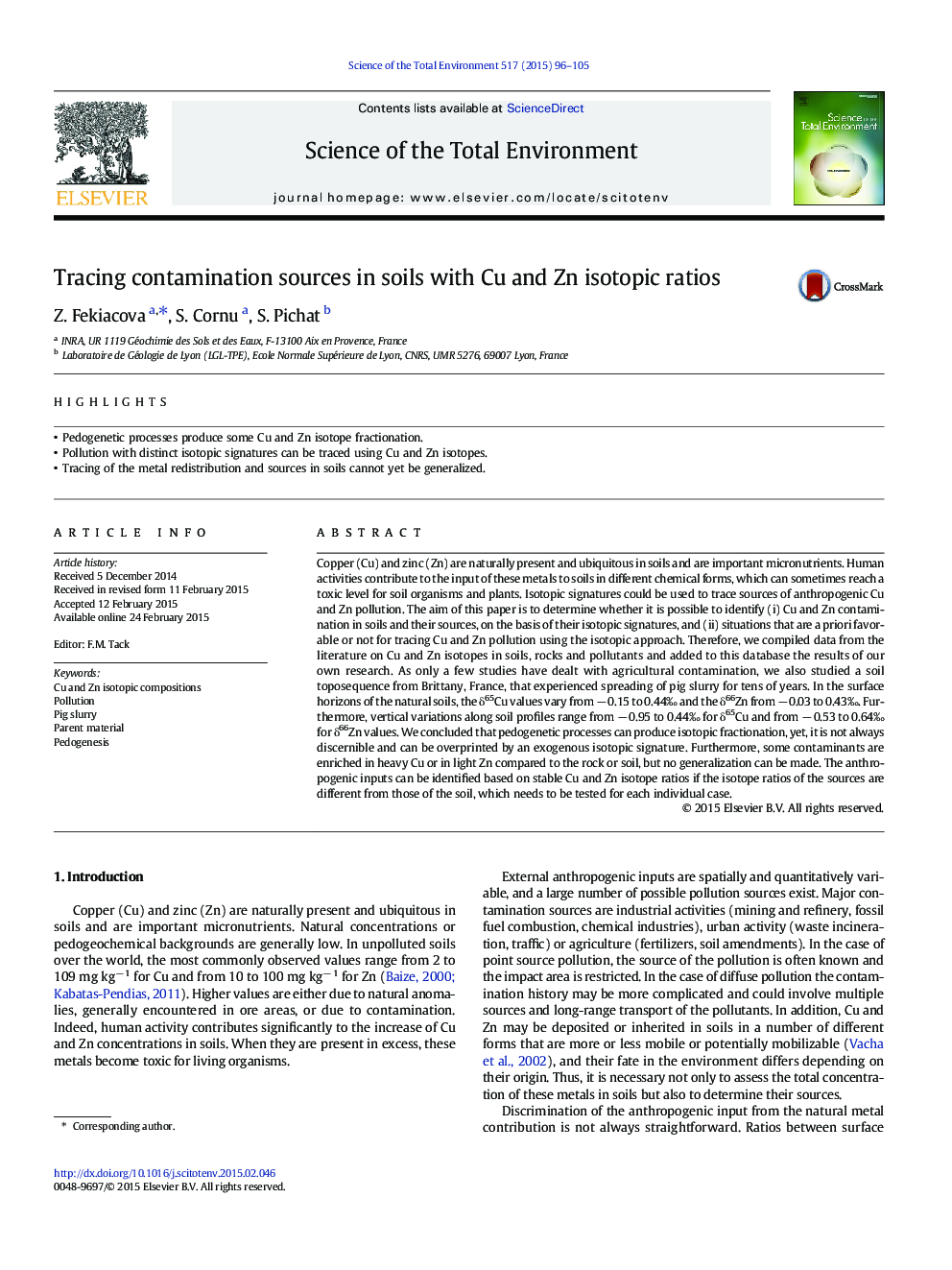| کد مقاله | کد نشریه | سال انتشار | مقاله انگلیسی | نسخه تمام متن |
|---|---|---|---|---|
| 4428425 | 1619762 | 2015 | 10 صفحه PDF | دانلود رایگان |

• Pedogenetic processes produce some Cu and Zn isotope fractionation.
• Pollution with distinct isotopic signatures can be traced using Cu and Zn isotopes.
• Tracing of the metal redistribution and sources in soils cannot yet be generalized.
Copper (Cu) and zinc (Zn) are naturally present and ubiquitous in soils and are important micronutrients. Human activities contribute to the input of these metals to soils in different chemical forms, which can sometimes reach a toxic level for soil organisms and plants. Isotopic signatures could be used to trace sources of anthropogenic Cu and Zn pollution. The aim of this paper is to determine whether it is possible to identify (i) Cu and Zn contamination in soils and their sources, on the basis of their isotopic signatures, and (ii) situations that are a priori favorable or not for tracing Cu and Zn pollution using the isotopic approach. Therefore, we compiled data from the literature on Cu and Zn isotopes in soils, rocks and pollutants and added to this database the results of our own research. As only a few studies have dealt with agricultural contamination, we also studied a soil toposequence from Brittany, France, that experienced spreading of pig slurry for tens of years. In the surface horizons of the natural soils, the δ65Cu values vary from − 0.15 to 0.44‰ and the δ66Zn from − 0.03 to 0.43‰. Furthermore, vertical variations along soil profiles range from − 0.95 to 0.44‰ for δ65Cu and from − 0.53 to 0.64‰ for δ66Zn values. We concluded that pedogenetic processes can produce isotopic fractionation, yet, it is not always discernible and can be overprinted by an exogenous isotopic signature. Furthermore, some contaminants are enriched in heavy Cu or in light Zn compared to the rock or soil, but no generalization can be made. The anthropogenic inputs can be identified based on stable Cu and Zn isotope ratios if the isotope ratios of the sources are different from those of the soil, which needs to be tested for each individual case.
Journal: Science of The Total Environment - Volume 517, 1 June 2015, Pages 96–105